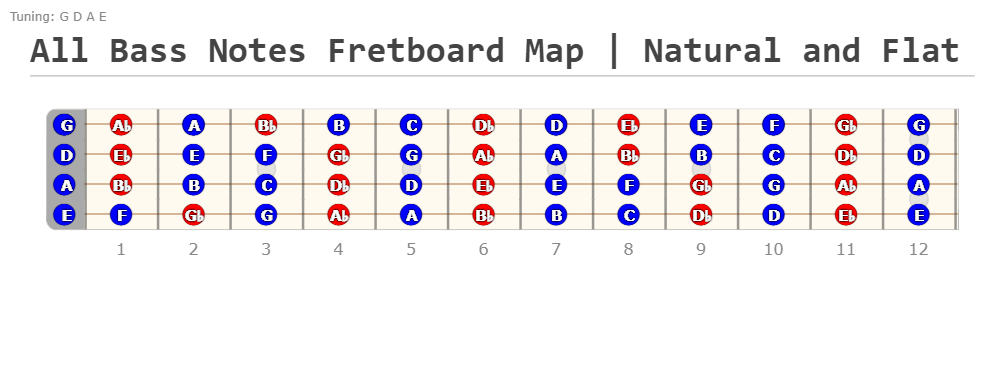Learning the bass notes is a key step in opening up the bass fretboard. It’ll help you visualize the neck, and play the bass like a boss.
So whether you’re looking to make the leap from beginner to pro, or just want to expand your bass theory knowledge, then the fretboard diagrams and other resources in this lesson are for you!
Table of Contents
Open String Notes
The easiest and first step in memorizing the bass notes starts with the open string names!
Seriously, the open string notes are stupidly simple to remember:
E-A-D-G
Say these note names out loud, and play each bass string as you say them.
If you want a Mnemonic for standard bass tuning, try:
Eddie-Ate-Dynamite-Gross
In a sentence: “Eddie ate dynamite, gross!”
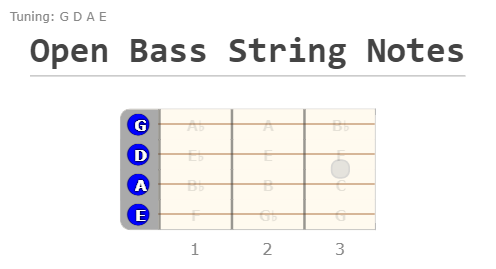
Individual bass string notes
Once you have the open strings memorized you can move onto individual bass strings.
When memorizing bass notes, you only need to memorize the natural notes! This makes things easy because there are only 7 natural notes in Western music theory.
And since the bass strings restart at the 12th fret (the octave), you only have to memorize the natural notes up to that point!
You’ll know and understand where the sharps/flats are by default if you know the location of the natural bass notes.
For example, if you know where the G note is, then you know the Gb note is only a half-step below it! The same principle applies to sharp notes as well.
Bass notes on E string (4th string)
Your first bass string is the E string.
Memorizing the notes on the E string will help you don’t understand the half and whole steps that exist between natural notes, which ultimately makes it easier to learn the notes on the other 3 bass strings.
Simply put, there is a whole step between all natural notes other than:
E to F and B to C
Those are the only natural notes with a half step between them!
You’ll notice this half step from the open string to the 1st fret, and the 7th fret to the 8th fret.

Bass notes on A string (3rd string)
Now that you’ve learned the notes on one bass string it will be a piece of cake to learn them on the next string!
This is due to the fact that you’ve now familiarized yourself with the whole steps and half steps that exist between natural notes.
One interesting note about the A string natural notes is that they create an A minor scale when played in order. But that’s a lesson for another time.
Lastly, when you have these natural notes memorized, you’ll have memorized half of the fretboard!
Yes, you only had to remember the 14 note locations in order to memorized half of the bass notes on the fretboard.
Pretty easy, right?
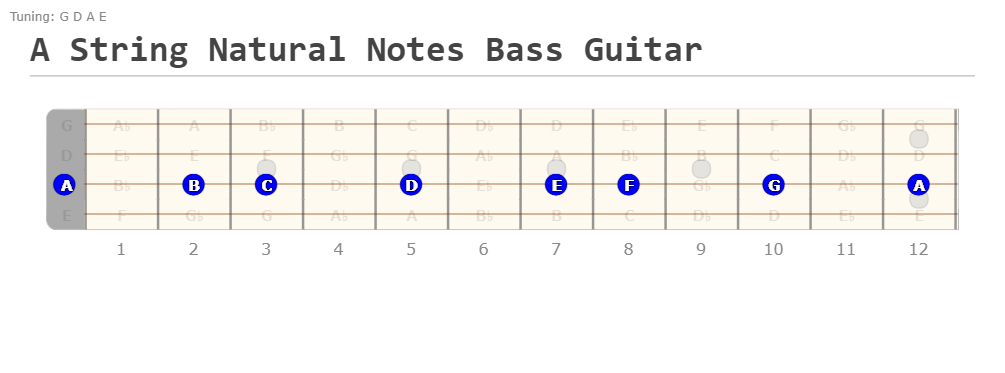
Bass notes on D string (2nd string)
Now that you’ve made it to the bottom 2 strings of the bass, the D string and G string, you can recognize notes using octaves!
You can find an octave by moving down 2 strings and up 2 notes.
For example, the F note is on the 1st fret of the E string. If you move down 2 string and up 2 frets, you’ll get to the 3rd fret of the D string, where the octave of the original F note appears.
Once again, this process will help you to recognize notes on the D string and the G string, all because you already learned the notes on the E string and A string.
But even with your new octave “trick”, you’ll still want to learn the notes on the D string by saying them out loud and paying attention to the whole steps and half steps between notes.
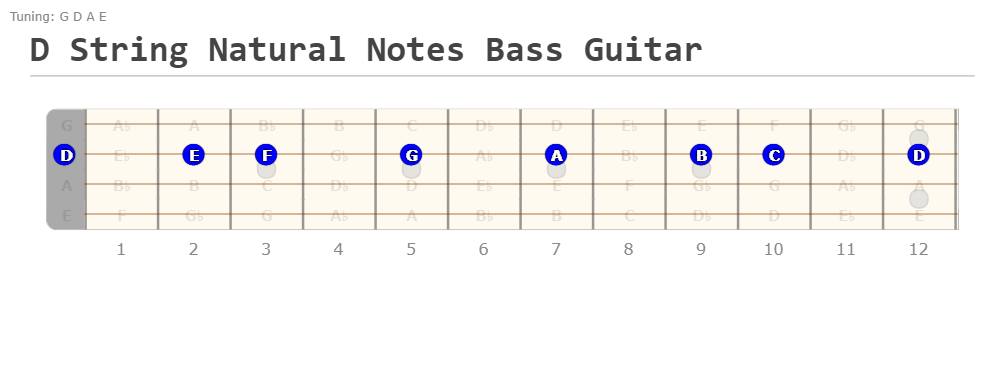
Bass notes on G string (1st string)
Lastly you’ll memorize the notes on the G string.
Congrats on making it this far! You’ve taken a step in your bass playing that many fear to do, despite the fact that you can learn the basics in around 10 minutes, and have the notes memorized quickly with just 5 or 10 minutes of practice a day.
You’ll learn the bass notes on the G string the same way you learned the notes on the other strings:
- Use octaves
- Memorize the natural notes
That’s it! Now you’ve learn all bass notes across the neck/fretboard.
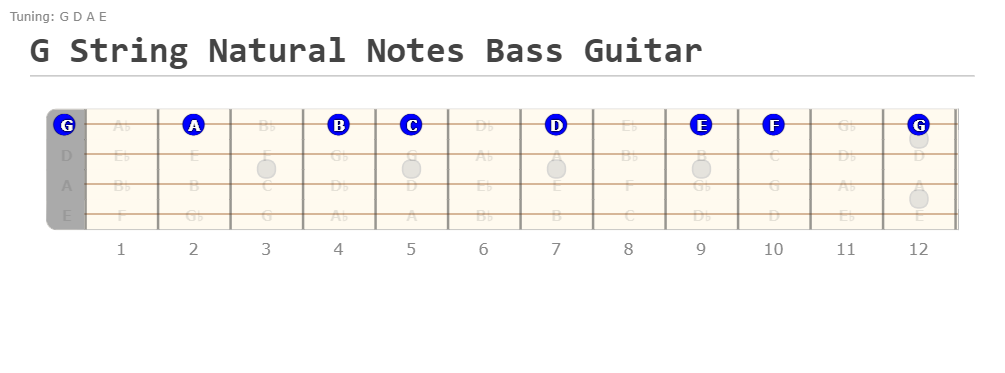
All natural bass notes
Here’s a nifty and helpful fretboard map that shows all the natural notes for the bass guitar!
Remember, take note of where the octaves are.
Also, notice how notes overlap. For example, play the E note in these 3 places:
- 12th fret E string
- 7th fret A string
- 2nd fret D string
See how they all sound the same? That’s because they are the same.
Understanding this concept will help you to visualize the fretboard better as you start to learn bass scales and arpeggios.


Printable Bass Notes Chart and PDF
All bass notes fretboard diagram | Natural and flat
